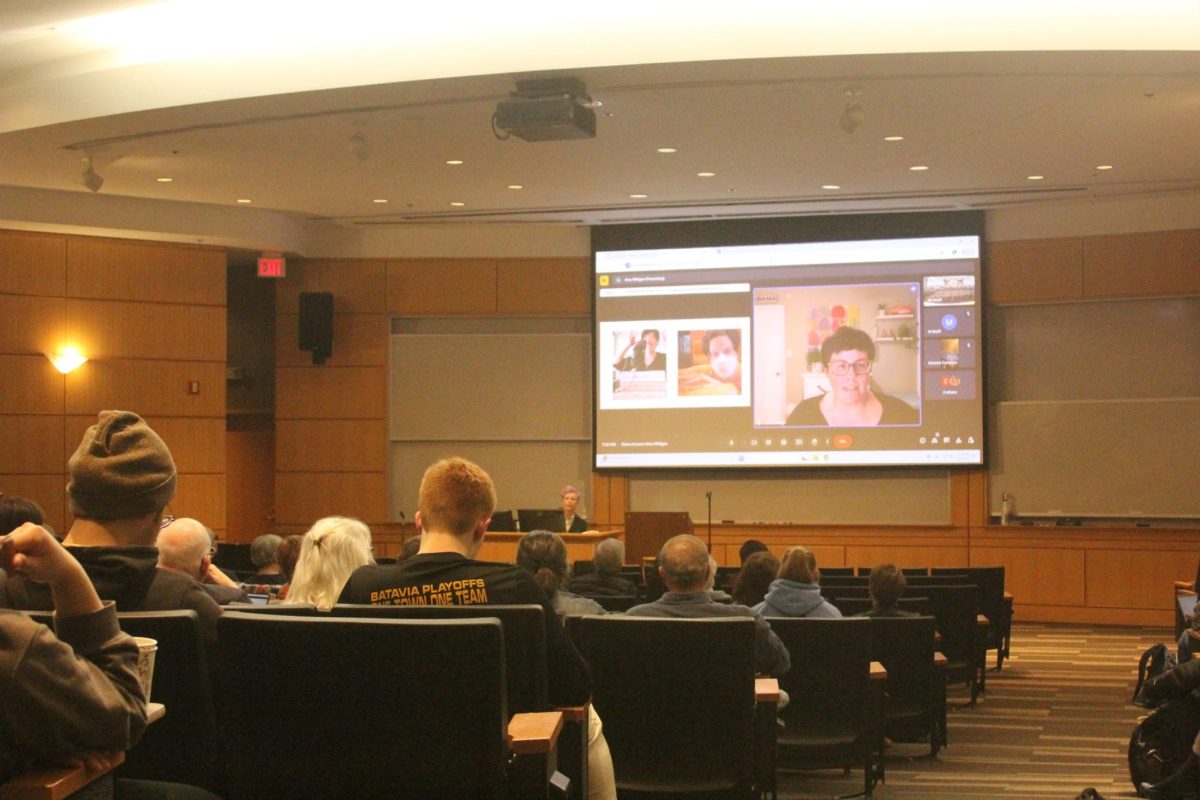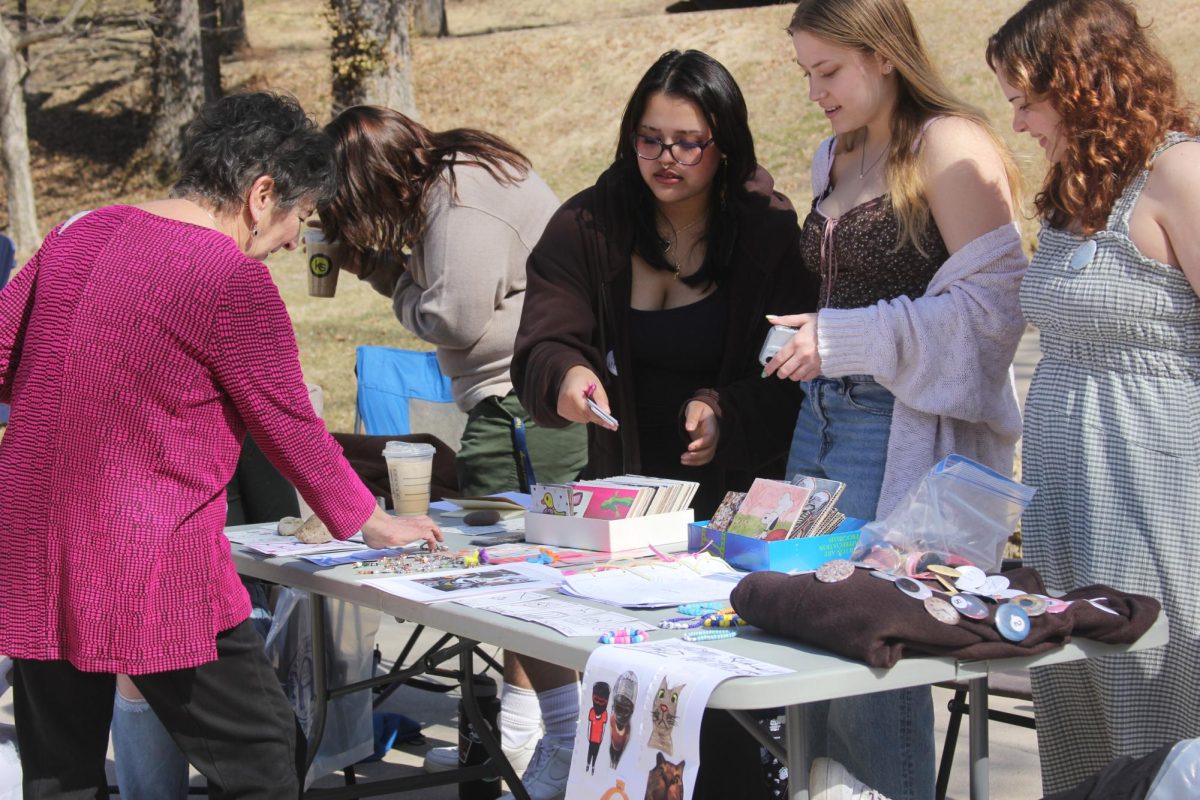“Reduce, reuse and recycle,” goes the now-classic phrase. While these three Rs have long been a cornerstone of environmental consciousness, a growing cohort is fighting for a different “R”: repair. The Right to Repair movement advocates for consumers’ right to more accessibly fix the things they own. However, in a world dominated by fast fashion, disposable electronics and two-day shipping, it’s easy to toss out the old and buy something new.
As Niah Tyler, a senior and vice president of the Sierra Club put it, “Not everyone has the time… or wants to take the moment out of their day,” to make repairs to their belongings. Perhaps a favorite shirt is developing holes or a flower pot has cracked into a few pieces. Reordering these items might only take a few steps.
“It’s just so much easier to order something off Amazon and have it shipped to your house,” Tyler said. “That’s not their fault at all. It’s just the society that we’ve been conditioned to.”
Replacing damaged items can be convenient, but does that convenience solve problems or create new ones? Emerson Lehman, junior and president of the Sierra Club at Augustana, called out the fashion industry as a source of waste.
“Fashion companies pump out thousands of pieces of clothing,” Lehman said, “but they’re often hyper-trendy or not made with very good quality.”
Whether they start out trendy or not, discarded clothing items often end up in landfills. In 2023, the fashion industry generated 97 million tons of waste each year, or about the weight of 270 Empire State Buildings. Our individual choices might seem insignificant, but they add up in staggering amounts.
Grant and Kim Sims own and operate Monster Sewing in Moline. The shop advertises custom sewing and alterations to all types of clothing, offering a way to maintain the items you already know and love.
“You buy a leather coat and, when the zipper breaks, replace it for $20 to $50 instead of buying a new coat,” Grant said. “It’s a lot more sustainable to mend it rather than purchase a new item.”
With the overflow of landfills and corresponding consequences for the planet, repairing existing items can have direct environmental benefits.
“Repairing what you already have reduces your consumption of goods,” Lehman said. “The less you consume, the smaller your environmental impact.”
Advertising influences how we behave when our belongings are damaged, but so do countless design and policy decisions that present real challenges to independent repair. If you use an iPhone, take a closer look at the screws holding it together; they’re a specialized “anti-tampering” design called pentalobe, and require a unique five-pointed screwdriver to remove.
Why, then, is replacement so hard to refuse? Part of the difficulty lies in feelings of pride and excitement that come with new purchases. It can be hard to know that broken and damaged belongings, especially those with sentimental value, aren’t intact or pristine. Practicing repair, though, can help reframe the joy of ownership and save money.
“[Repair] is better because they already like that garment [and] they can’t get the same thing for the prices they’re going to pay to have it fixed,” Kim said.
Accessibility presents another barrier. Repairing takes skills, tools, and time—resources that not everyone has by default. For Grant, it stems from the lack of education on trades like sewing, a loss which he said has “a ripple effect.”
That ripple is visible in fashion industry data and other consumption trends. It’s also felt by small repair businesses like Monster Sewing, who find themselves among shrinking company.
“When we first started our first shop back in the 90s, there were five other big tailor shops, but now you [have] people who do it out of their homes and a place over in NorthPark Mall… and that’s kind of it,” Grant said.
This may seem discouraging, but taking items into a shop is only one way to see the benefits of repair. Though some customers from as far as Minnesota have sought the services of Monster Sewing, expertise is not a requirement to achieve lasting and satisfying fixes. Especially for minor touch-ups, learning by doing can provide solutions and new skills.
“Buy a $5 sewing kit and the next time you get a rip in your favorite shirt, YouTube it and try to fix it yourself,” Lehmen said.
Learning and sharing skills aren’t strictly online activities, though. Initiatives like repair cafes bring together volunteers and participants to fix everything from appliances to clothing. The one nearest to Rock Island is a two hour drive away, but you might not even need to step off-campus to find the resources you need. Yarn Club offers a social space complete with needles and yarn, well-suited for a clothing repair practice called darning, in which holes are mended without the use of patches.
The same skills that make repair accessible can have unexpected benefits in different areas. Tyler, who has been crocheting for more than eight years, finds humanity in handmade and repaired clothes.
“I’ve made multiple clothing items out of crochet, because they make really nice gifts,” Tyler said. “Putting time and care into something and seeing how every stitch is made really puts things into perspective.”
For repairs that might be more involved than 10 minutes of sewing, the Right-to-Repair Movement is pushing for legislation that empowers consumers. Between 2012 and 2024, pro-repair legislation has passed in eight separate states. Besides altering the law, change can grow from the level of individuals and communities. Lehmen sees the popularity of thrift shopping as an example of this change.
“When I was a kid, shopping at a secondhand store was a bad thing,” Lehmen said. “But now it’s become trendy.”
Repairing an individual’s own belongings is more than a cost-saving measure–it’s a statement against waste and overconsumption. It gives people the opportunity to preserve the things they already love, reclaim lost skills and foster a culture of sustainability. Repair isn’t just about fixing items–it’s about fixing our relationship with the world around us.
“Taking the time to think about your choices… causes a chain reaction in the role of consumerism,” Tyler said.






































































































